The classification criteria for fibromyalgia have changed over time, affecting its definition from a “peripheral pain-defined disease” to a “systemic symptom-based disease.” Indeed, the ACR-2010…
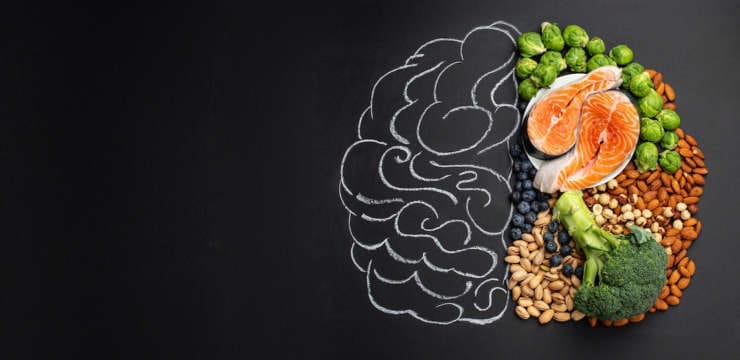
Gut and Intestinal Health: The health of an individual’s gut determines what nutrients are absorbed along with what toxins, allergens and microbes are kept out. It is directly linked to the health of the whole body. Intestinal health could be defined as optimal digestion, absorption, and assimilation of food. But this is a job that depends on many other factors. More than 100 million Americans have digestive problems. Two of the top-selling drugs in America are for digestive problems, and they run in the billions. There are more than 200 over-the-counter (OTC) remedies for digestive disorders. And these can and do create additional digestive problems.
If an individual’s digestion is not working properly, the first thing is to understand what is sending the gut out-of-balance in the first place.
Low-fiber, high-sugar, processed, nutrient-poor, high-calorie diet, causes all the wrong bacteria and yeast to grow in the gut and damages the delicate ecosystem in your intestines.
Overuse of medications that damage the gut or block normal digestive function, i.e. acid blockers (Prilosec, Nexium, etc.), anti-inflammatory medication (aspirin, Advil, and Aleve), antibiotics, steroids and hormones.
Undetected gluten intolerance, celiac disease or low-grade food allergies to foods such as dairy, eggs, or corn.
Chronic low-grade infections or gut imbalances with overgrowth of bacteria in the small intestine, yeast overgrowth, parasites.
Toxins like mercury and mold toxins damage the gut.
Lack of adequate digestive enzyme function, from acid-blocking medications or zinc deficiency.
Stress can alter the gut’s nervous system, cause leaky gut, and change the normal bacteria.
Visits for intestinal disorders are among the most common trips to primary care doctors. Most, which also includes most doctors, do not recognize or know that digestive problems wreak havoc in the entire body. This leads to allergies, arthritis, autoimmune disease, rashes, acne, chronic fatigue, mood disorders, autism, dementia, cancer, and more.
Having proper gut and intestinal health is absolutely central to your health. It is connected to everything that happens in the body.
Functional medicine and health coaches are able to look at the source of the gut imbalance and run diagnostic tests to discover the exact type and number of bacteria imbalances. From here, natural supplements can be recommended such as a probiotic to recreate a healthy gut microbiome.

The classification criteria for fibromyalgia have changed over time, affecting its definition from a “peripheral pain-defined disease” to a “systemic symptom-based disease.” Indeed, the ACR-2010…

The symptoms associated with virus infections vary; some patients report physical pain, others have gastrointestinal issues, others say their mucous production is elevated, and others…

Thyroid function is crucial to maintain health. The balance and secretion of hormones like T3 and T4 orchestrate the metabolic process. However, a dysfunctional thyroid…

There are different possible causes of abdominal pain and digestive problems. Sometimes a bulging disc is the cause. A bulging disc that is causing abdominal…
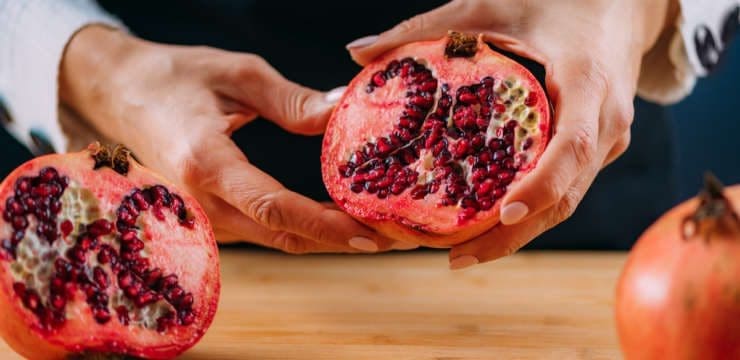
Degenerative diseases, specifically those that affect joints and muscle, produce detrimental effects on movement, agility, strength, and quality of life. Numerous nutritional and strength exercise…

Urolithin A is the most abundant type of urolithin produced by the human microbiota. This nutritional compound is derived from ellagitannins and ellagic acid commonly…
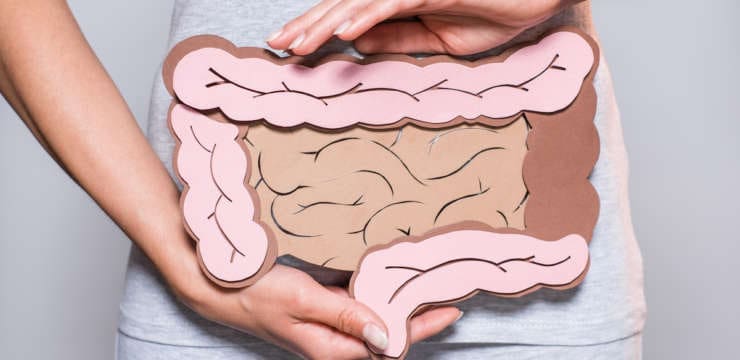
The metabolic effect of gut-derived metabolites coincides with the prevention of conditions like obesity and diabetes in mouse models. However, to produce the beneficial gut-derived…

t is not news that mitochondria are not the ONLY powerhouses of our body. Indeed, our gut microbiome can metabolize foods that were thought to…
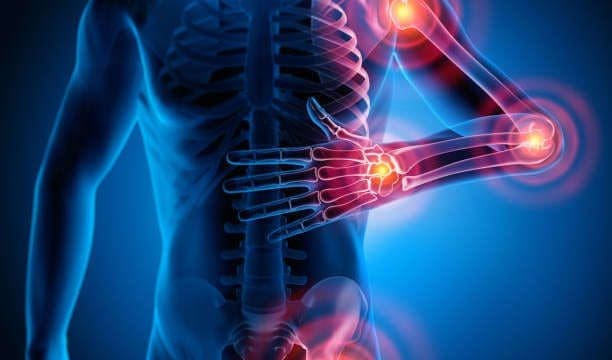
Fifty-four million adults currently suffer from Arthritis. In addition to that, about 9% of adults have some type of limitation attributed to Arthritis. The CDC predicts the number of those diagnosed with Arthritis will only continue to rise in the years coming. With autoimmune disease continually growing, it begs the question, “What are we doing to reduce these chances in our patients?”.
Arthritis
Arthritis is inflammation of the joints. With “Arthro,” meaning joint, and “itis” referring to inflammation, it is clear that joint inflammation is the symptom being referred to. Many conventional approaches to arthritis treatment are aimed at reducing the inflammation of the joints. These medications also come with a heavy dose of side effects, including kidney failure, gastritis, and bleeding in the stomach. Looking from a functional perspective, aiming to heal at the orthomolecular level, we pinpoint what is causing the inflammation in the first place. By resolving the overall inflammation in the body, evaluating the musculoskeletal system, and creating a holistic plan, we are able to naturally reduce what is causing the inflammation. With this plan of action, joint inflammation ultimately subsites as well.
Underlying Conditions
As with other autoimmune conditions, we see underlying factors associated with Arthritis. One of the main contributing factors is infection and imbalance of the gut microbiota. For over 100 years, researchers have been searching for the exact link between the arthritis-infection connection. It has been documented countless times in animals and humans that those with Arthritis have another type of infection. We know that in patients with RA (Rheumatoid Arthritis), there are polymorphonuclear (PMN) leukocytes. This association of joint neutrophilia with RA has implied infectious etiology.
DNA Sequencing
DNA sequencing was used to identify the bacteria on the mouth and in the intestines of participants with RA. This research has found that those who have an early onset of RA have had 4x more porphyromans gingivalis bacteria vs. the healthy controlled adults. Intestinal bacteria was also associated with inflammation and is more prevalent in patients who have RA. A specific test we use to test DNA is from DNA Life called DNA Health. We also use a stool test from Genova to detect inflammation and strains of bacteria in the gut. The balance between the gut and inflammation is substantial. There are countless studies documenting “leaky gut”. When the gut becomes so inflamed, the barrier becomes permeable, and small undigested proteins leak through the barrier back into the bloodstream. Our body sees these proteins as foreign invaders and sends white blood cells to attack. This process is what starts the inflammation. With continuous leakage and cells attacking our own body, the autoimmune diseases set in. With the help of the Genova test-we are able to create a program that helps reduce, repair, and replenish the gut. A sample resort of both tests are shown below:
[wp-embedder-pack width=”100%” height=”400px” download=”all” download-text=”” url=”http://www.dnalife.healthcare/wp-content/uploads/2020/05/DNA-Health-Sample-Report-2020.pdf” /]
[wp-embedder-pack width=”100%” height=”400px” download=”all” download-text=”” url=”https://www.gdx.net/core/sample-reports/gi-effects-2200-sample-report.pdf” /]
Hormones
Hormones are to ensure our bodies are properly functioning. It is common for those who have Arthritis to have a hormone imbalance as well. These hormones include DHEA, Pregnenolone, Natural progesterone, natural estrogens, human growth hormone, cortisol, melatonin, and more. Hormones are delicate and can be thrown off by a multitude of environmental factors. Even something as simple as perfume, scented body soap, and lotions can throw imbalance hormones. One hormone test we specifically use is the DUTCH Plus test from DUTCH. This is a combination of 6 urine and six saliva samples throughout a 24 hour period. This test shows us the exact numbers and fluctuations one has in hormones. A sample of this report can be seen below:
[wp-embedder-pack width=”100%” height=”400px” download=”all” download-text=”” url=”https://dutchtest.com/wp-content/uploads/2020/01/DUTCH-Plus-Female-Sample-Report-Ref02252020.pdf” /]
A Functional Approach
When dealing with a disease such as Arthritis, there are six areas to be considered from a functional standpoint. The first being dehydration. Unfortunately, dehydration is widespread and causes the body to not function at its total capacity. We are able to track hydration levels at the intracellular and extracellular level of our patients with the use of our InBody 770 machine. The second aspect is food and environmental allergies. These allergies around us are impacting our genes and how we break down food particles. If we are sensitive to food, our gut is not properly digesting it. This leaves us with leaky gut syndrome and proteins leaking back into our bloodstream, resulting in inflammation. Third, hormone imbalances. As mentioned above, we can not improve our joints if we do not first assess the hormones. The fourth factor is infections. If we have previous infections, they may have altered our DNA or still be lingering around, leading to excess inflammatory factors. Fifth, nutritional imbalances. Similar to hormones, we need our nutrition to be fully functioning to properly allow energy creation and proper breakdown. If we lack micronutrients, our production and balance of energy will be offset. Finally, the last point to be evaluated is toxicities. Toxins surround us everywhere we go. They are in the products we use, the air we breathe, the food we eat, etc.
Phase Angle
The phase angle is a snapshot of cellular health. We want our cells to be strong, healthy, and able to fight off infection. This comes from a solid cellular membrane. When an individual’s phase angle is around 7, we know the cells are healthy. However, in many cases, phase angles fall closer to the 4-5 range. A phase angle in this low range indicates that the cellular membranes are permeable and more susceptible to infection and early apoptosis (cell death). To improve overall phase angle, we must decrease visceral fat (the fat surrounding the organs) and increase our skeletal muscle mass to outweigh our weight and body fat mass. As previously mentioned, we use the InBody 770 machine to detect phase angle, visceral fat, water levels, inflammation, skeletal muscle mass, body fat mass, and BMI.
[embed]https://www.youtube.com/watch?v=047lML9ndPo[/embed]
Tie It Together
By approaching Arthritis and inflammation from these areas and considering these six factors, we are able to assess what the real source of inflammation is. This provides us with a great understanding of how to go about reducing inflammation and repairing the body in a functional way. The musculoskeletal system is intertwined with all areas of the body. It comes down to the cellular level.
We have discovered that everything is connected to the gut and phase angle. We did not associate joint pain with gut inflammation before, but now we see that it is all connected. We can start by feeding our bodies anti-inflammatory foods such as smoothies to reduce inflammation. -Kenna Vaughn, Senior Health Coach
References:
Brownstein, David. “Overcoming Arthritis.†Functional Medicine University . 2020.
Additional Online Links & Resources (Available 24/7)


Online Appointments or Consultations: bit.ly/Book-Online-Appointment


Online Physical Injury / Accident Intake Form: bit.ly/Fill-Out-Your-Online-History


Online Functional Medicine Assessment: bit.ly/functionmed

Obesity is an impactful disease favored by multiple factors with no signs of abating. Despite massive health campaigns and multiple dietary, surgical and pharmacological options…
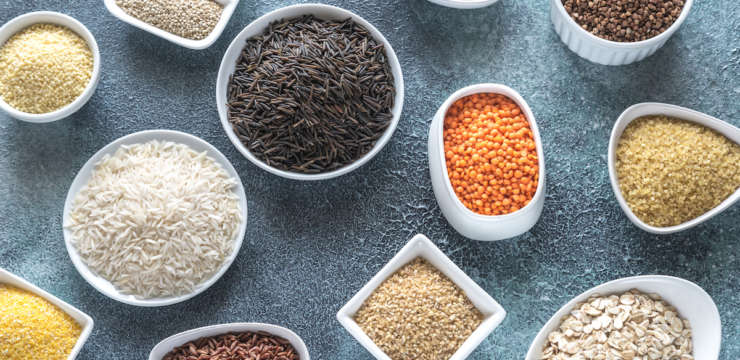
Food sensitivities reflect gastrointestinal issues such as diarrhea, constipation, bloating, and overall discomfort. Additionally, multiple other symptoms like headache, wheezing, brain fog, depression, and even…

The interaction between beneficial bacteria and the host is called symbiosis. Furthermore, symbiosis depends on multiple factors such as microbial diversity, nutritional intake, lifestyle factors,…

The beneficial effects of using probiotics in our diets or supplementation have been studied in the last years. Indeed, these studies provide positive information about…

The main focus of orthomolecular medicine is to treat the leading cause of the condition. Detecting the root cause is the cornerstone to determine the…

Histamine is closely related to allergies and immune responses. Certainly, histamine’s involvement in common allergies is the main reason why antihistamines were developed. However, the…

Gastrointestinal issues are one of the main reasons why patients come into a doctor’s office. Certainly, irritable bowel syndrome (IBS) is the primary gastrointestinal diagnosis.…
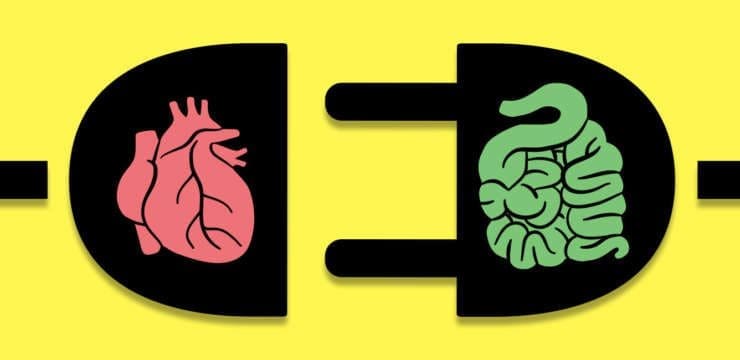
The world of medicine is continually advancing and growing. Research is being published every day on new ways to measure health. In recent years, the importance of Phase Angle has come to light.
Phase angleÂ
When reviewing InBody scans, there is one number we pay exceptional attention to. This number is the phase angle. The phase angle can be summed up as the quality and quantity of the health of a cell. Essentially, a GPA of an individual’s overall health. Phase angles measure oxidative stress, the aging stress on a cell, and the nutritional status. If cell membrane integrity begins to decline, so will the phase angle reported and vice-versa. Keeping track of this number will allow practitioners to determine if the patient responds to the therapeutic exercises, treatments, and lifestyle changes the clinic is implementing. Â
It is important to remember that when we exercise, we damage the cells and muscles. The act of building muscle is breaking down the muscle we have and recovering. This is why rest and nutrition are key.Â
Body Impedance Analysis (BIA)Â
At our clinic, we use the InBody 770. This technology provides beneficial information like muscle mass, fat mass, segmental fat, intracellular water, extracellular water, phase angle, visceral fat, and more. To learn more about BIA and phase angle, a video is provided below.Â
[embedyt] www.youtube.com/watch?v=MUCalp2SkNE%5B/embedyt%5D
TMAOÂ
Adding on to new research coming to light. It has been shown that TMAO is another significant factor to consider when looking at an individual’s overall health. TMAO is trimethylamine N-Oxide. Every individual has a unique microbiome comprised of healthy bacteria. However, microbiomes are full of unhealthy bacteria as well. As we eat, we consume TMA from red meat, egg yolk, and full-fat dairy products. TMA is later converted to TMAO in the liver. High levels can reduce the removal of bad cholesterol from the arteries and increase your heart attack and stroke risk. To remove TMAO, it is recommended that individuals eat a Mediterranean diet and limit red meat.Â
[embedyt] www.youtube.com/watch?v=-pTXvrPTmeI%5B/embedyt%5D
At the clinic, we have the capability to test for TMAO using Cleveland Heart Lab. Below is a sample report from Cleveland Heart Lab. Under the metabolic section, you can see the TMAO levels.Â
RESEARCH IS CONSTANTLY UNCOVERING NEW WAYS TO HELP PATIENTS PROTECT THEMSELVES FROM INFLAMMATION. BY PERFORMING THESE TESTS, WE CAN SEE IF AN INDIVIDUAL IS MORE SUSCEPTIBLE TO AN UNDERLYING CONDITION AND HAVE THEIR LEVELS TESTED APPROPRIATELY. THIS ALLOWS US TO CREATE A PERSONALIZED TREATMENT PLAN FOCUSED ON BRINGING THEM BACK TO OPTIMAL HEALTH. -KENNA VAUGHN, SENIOR HEALTH COACHÂ
References
Publishing, Harvard Health. “Red Meat, TMAO, and Your Heart.” Harvard Health, www.health.harvard.edu/staying-healthy/red-meat-tmao-and-your-heart. Â
Additional Online Links & Resources (Available 24/7)


Online Appointments or Consultations:  https://bit.ly/Book-Online-Appointment


Online Physical Injury / Accident Intake Form: https://bit.ly/Fill-Out-Your-Online-History


Online Functional Medicine Assessment:Â https://bit.ly/functionmed
Disclaimer
The information herein is not intended to replace a one-on-one relationship with a qualified health care professional, licensed physician, and is not medical advice. We encourage you to make your own health care decisions based on your research and partnership with a qualified health care professional. Our information scope is limited to chiropractic, musculoskeletal, physical medicines, wellness, sensitive health issues, functional medicine articles, topics, and discussions. We provide and present clinical collaboration with specialists from a wide array of disciplines. Each specialist is governed by their professional scope of practice and their jurisdiction of licensure. We use functional health & wellness protocols to treat and support care for the musculoskeletal system’s injuries or disorders. Our videos, posts, topics, subjects, and insights cover clinical matters, issues, and topics that relate and support, directly or indirectly, our clinical scope of practice.* Our office has made a reasonable attempt to provide supportive citations and has identified the relevant research study or studies supporting our posts. We provide copies of supporting research studies available to regulatory boards and the public upon request. We understand that we cover matters that require an additional explanation of how it may assist in a particular care plan or treatment protocol; therefore, to further discuss the subject matter above, please feel free to ask Dr. Alex Jimenez or contact us at 915-850-0900.  Read More…
Dr. Alex Jimenez DC, MSACP, CCST, IFMCP*, CIFM*, CTG*
email: coach@elpasofunctionalmedicine.com
phone: 915-850-0900
Licensed in Texas & New Mexico